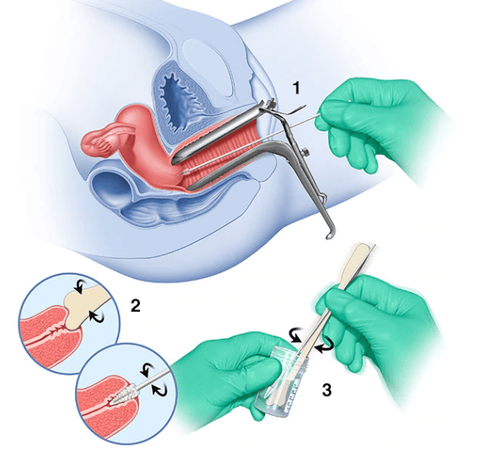This is an automatically translated article.
Male hormone therapy is performed in female subjects who have a predisposition to transgender men. This hormone therapy is used alone or in combination with gender reassignment surgery. The use of virilizing hormones can bring many benefits in terms of changing gender identity, but there are also health risks for users.1. What is hormone therapy in transgender people?
Virilization hormone therapy is used to induce the physical changes in your body caused by male hormones during puberty (sub-sex characteristics) to promote concordance between genes that regulate gender identity and your body (gay).
If virilizing hormone therapy is started before pubertal changes in women may prevent secondary female sex characteristics, such as breast development. Virilization hormone therapy is also known as cross-sex hormone therapy.
During male hormone treatment, you will be supplemented with the male hormone testosterone, which stops a woman's menstrual cycle and reduces the production of estrogen derived from the ovaries. The changes caused by these drugs may be temporary or permanent. Virilization hormone therapy can be performed alone or in combination with virilization surgery.
However, virilizing hormone therapy is not for all virilized transgender individuals. Virilization hormone therapy can affect a transgender person's fertility and sexual function and cause other health problems. Your doctor can help you weigh the risks and benefits.
2. Why is virilization hormone therapy performed?
Virilization hormone therapy is used to change a transgender person's hormone levels to match their gender identity.Often times, people seeking virilizing hormone therapy experience distress due to the difference between the sex experienced or expressed and the sex assigned at birth (sex distress syndrome). – dysphoria gender). To avoid the risks of hormone excess, the goal is to maintain hormone levels within normal limits for the target sex.
Masculinity hormone therapy can:
Make gender dysphoria less severe Reduce psychological and emotional distress Improve psychological and social functioning Improve sexual satisfaction Improve quality of life Although the use of hormone has not yet been approved by the Food and Drug Administration to treat "sex distress syndrome," research shows that it can be safe and effective.
If used in adolescents, hormone therapy is usually started at age 16. Ideally, treatment begins before secondary sex characteristics develop so the teen can go through puberty. as their assigned gender. Hormone therapy is not usually used in children.
However, male hormone therapy is not for everyone. Your doctor may not recommend virilizing hormone therapy if you:
Have had or have had hormone-sensitive cancers, such as breast cancer Have thromboembolic disease, such as when blood clots a clot that forms in one or more of the deep veins of the body (deep vein thrombosis) or a blockage in one of the pulmonary arteries in the lungs (pulmonary embolism) Pregnancy Has significant uncontrolled mental health problems controllable

Liệu pháp hormone nam hóa được sử dụng để thay đổi nồng độ hormone của người chuyển giới để phù hợp với bản dạng giới
3. Risks of virilization therapy
Talk to your doctor about changes in your body and any concerns you may have. Complications of virilizing hormone therapy include:
Overproduction of red blood cells (polycythemia) Weight gain Acne Development of male pattern baldness Sleep apnea Elevated liver function tests Amounts abnormal lipids in the blood (dyslipidemia), which is at higher risk in people with polycystic ovary syndrome mania or an underlying mental disorder that gets worse High blood pressure (hypertension) ), type 2 diabetes, and cardiovascular disease, in the presence of risk factors Evidence shows no increased risk of breast or cervical cancer Evidence suggests that virilizing hormone therapy increases cancer risk Ovarian and uterine cancer is inconclusive. More research is needed
4. Fertility of virilizing hormone therapy users
Because virilization hormone therapy may decrease your fertility, you will need to make a decision about your fertility before starting treatment. The risk of permanent infertility is increased with long-term hormone use, particularly when hormone therapy is started before puberty. Even after hormone treatment is stopped, ovarian and uterine function may not recover enough to ensure that you can get pregnant.
If you want to have a baby, talk to your doctor about egg freezing (mature oocyte cryopreservation) or embryo freezing (embryo cryopreservation). Remember that egg freezing has many steps - ovulation induction, egg retrieval and freezing. If you want to freeze embryos, you'll need to take an extra step to get the eggs fertilized before freezing.
At the same time, although testosterone may limit your fertility, you are still at risk of pregnancy if you have a uterus and ovaries. If you want to avoid pregnancy, use birth control or an IUD.
5. Steps to prepare for virilization hormone therapy
Before starting virilization hormone therapy, your doctor will evaluate your health to rule out or address any medical conditions that may affect or contraindicate treatment. Evaluation may include:
Evaluation of your personal and family medical history Physical examination, including evaluation of your external reproductive organs Laboratory tests that measure lipids, sugar levels blood count, complete blood count, liver enzymes and electrolytes, and pregnancy test Assessment of your immunizations Age- and sex-appropriate screening Identifying and managing tobacco and drug use Drugs, alcohol abuse, HIV and other sexually transmitted infections Discuss contraceptives and your wishes for future fertility Discuss the use of treatments that can potential harm, such as unspecified hormones or industrial silicone injections You may also need a mental health evaluation by a provider with expertise in transgender health. The assessment can assess:
Your gender identity and depression
The impact of your gender identity at work, school, home and society, including issues related to discrimination discrimination, relationship abuse and minority stress Mood or other mental health concerns Sexual health concerns Risk-taking behavior, including substance use and using non-medical grade silicone injections or unapproved hormone therapy or supplements Protective factors such as social support from family, friends, and colleagues Your goals, risks, and expectations about your treatment and future care plan Adolescents under the age of 18, traveling with their parents or guardians, should also see a doctor and qualified mental health provider on transgender child health to discuss the risks of hormone therapy, as well as the possible effects and complications of transitioning.

Trước khi bắt đầu liệu pháp hormone nam hóa, bác sĩ sẽ đánh giá sức khỏe của bạn
6. What is the process of virilization hormone therapy?
6.1. In the implementation process
Normally, you would start virilizing hormone therapy with testosterone. Testosterone is given by injection or by a patch or gel applied to the skin. Oral testosterone or synthetic androgens (androgens) should not be used because of possible side effects on your liver and lipids.
If you have prolonged periods, your doctor may recommend progesterone to control this.
6.2. After performing therapy
Masculinity hormone therapy will start to make changes in your body within weeks to months. During this period, you may have the following changes:
Oily skin and acne. This will begin one to six months after treatment. The maximum effect will occur within one to two years. Terminate menstruation. This should happen within two to six months of treatment. The voice is lower. This will begin three to 12 months after treatment. The maximum effect will occur within one to two years. Hair growth on face and body. This will begin three to six months after treatment. The maximum effect will occur within three to five years. Redistribution of body fat. This process should begin within three to six months. The maximum effect will occur within two to five years. Clitoral hypertrophy and vaginal atrophy. This will begin three to six months after treatment. The maximum effect will occur within one to two years. Increase muscle mass and strength. This should begin within six to 12 months of treatment. The maximum effect will occur within two to five years. Scalp hair loss. This should happen within 12 months of treatment.
7. Results of virilization hormone therapy
After treatment with virilizing hormone, you will see your doctor regularly to perform the following exams:
Record your physical changes Monitor your hormone levels and use the lowest dose needed to achieve desired physical effect Monitor changes in lipids, fasting blood sugar, blood count, liver enzymes and electrolytes that may be caused by hormone therapy Monitor mental health stability Your mental health After treatment with virilization hormones, you will also need routine preventive care if you have not had certain surgical interventions, including:
Breast cancer screening based on appropriate screening recommendations age-appropriate Cervical cancer screening based on age-appropriate recommendations Early assessment of persistent or recurrent vaginal bleeding Assess obstructive sleep apnea When performed cervical cancer screening, be sure to share that you are on testosterone therapy and make sure that the sex designation on your sample a you are ignored. This type of therapy can cause your cervical tissues to thin (cervical atrophy), which can mimic abnormal cells found on the surface of the cervix (cervical dysplasia). Cervical ).
Please dial HOTLINE for more information or register for an appointment HERE. Download MyVinmec app to make appointments faster and to manage your bookings easily.
Articles refer to the source: mayoclinic.org













